1. Understand the mechanism of mechanical optimization of woody plants 木本植物の力学的最適化の仕組みを理解する キーワード:微細構造、組織と材質
Trees live twice. In other words, as a plant, it supports its own large body for a long time, and as a wood, it supports our culture and activities as a building and material. From a material point of view, plant tissue is a model of cellular solid that provides optimal performance with the least amount of material, and even a miner component subtly changes the performance in such a way that humankind cannot yet create. It is a composite material. We will examine the characteristics of woody materials from the standpoint of structural science, and find out why we humans have used them, and why the plant developed and unique the unique functions, etc.
樹木は2度生きると言われる。すなわち生物として長い間、自らの大きな体を支え、さらに木材となってからは、建築物や材料として我々の文化や活動を支える。材料学的な観点からいえば、植物組織は、もっとも少ない素材で最適の性能をもたらすセル構造体のお手本であり、また、単純な主成分を微妙に変化させた、人類がまだ創造し得ない複合材料である。本研究では、このような木本の材料としての特徴を構造学の立場から精査し、我々人類が利用してきた理由や、植物固有の不思議な機能を解き明かす。
Cherry bark has significant tensile properties, but it is lost upon drying. Moisture content is a unique trigger that enables the bark to fall off by itself.
桜の樹皮は光沢があり平滑。しかし水平方向に大きく引き伸ばすことができる。ところが、乾燥すると瞬時に破断する。これは含水率をトリガーとして、樹皮を自然環境の中で剥離する緻密な機構である。
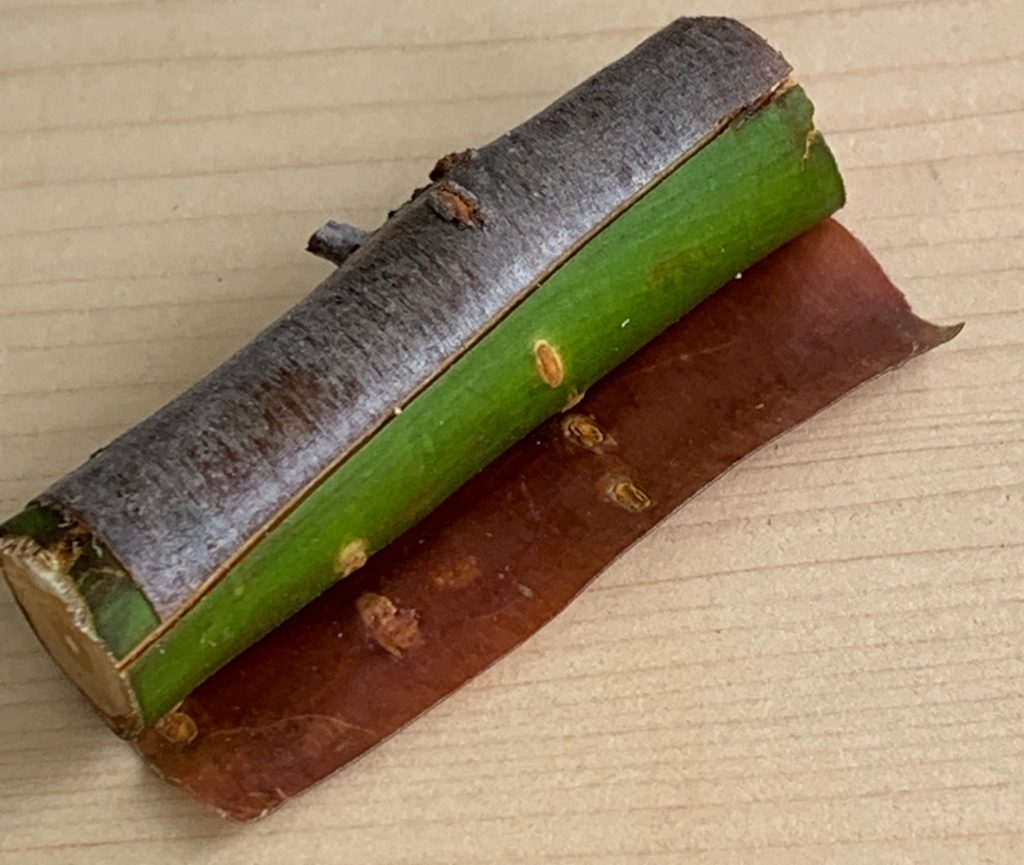
Ref: Kayoko Kobayashi, Yoko Ura, Satoshi Kimura, Junji Sugiyama. Outstanding Toughness of Cherry Bark Achieved by Helical Spring Structure of Rigid Cellulose Fiber Combined with Flexible Layers of Lipid Polymers. Advanced Materials, 30(6), 10.1002/adma.201705315
Quarter-sawn wood panel has significant bending properties. This property is well known in traditional wooden architecture. Why?
追まさの板は繊維と垂直方向によく曲がる。柿葺とは、伝統的な屋根の工法であり、その柿には通常、ヒノキ、サワラ、スギなどの柾目板が適している。しかし曲率のある部分には、追柾板が使われている。なぜだろうか?
Ref: Hwang, SW., Isoda, H., Nakagawa, T., Sugiyama, J. Flexural anisotropy of rift-sawn softwood boards induced by the end-grain orientation. J Wood Sci 67, 14 (2021). https://doi.org/10.1186/s10086-021-01946-y
2. Scrutinize structural diversity of wood by computer vision コンピュータービジョンを利用して木材構造の多様性を科学する キーワード: 樹種識別、種の特異性、構造の多様性
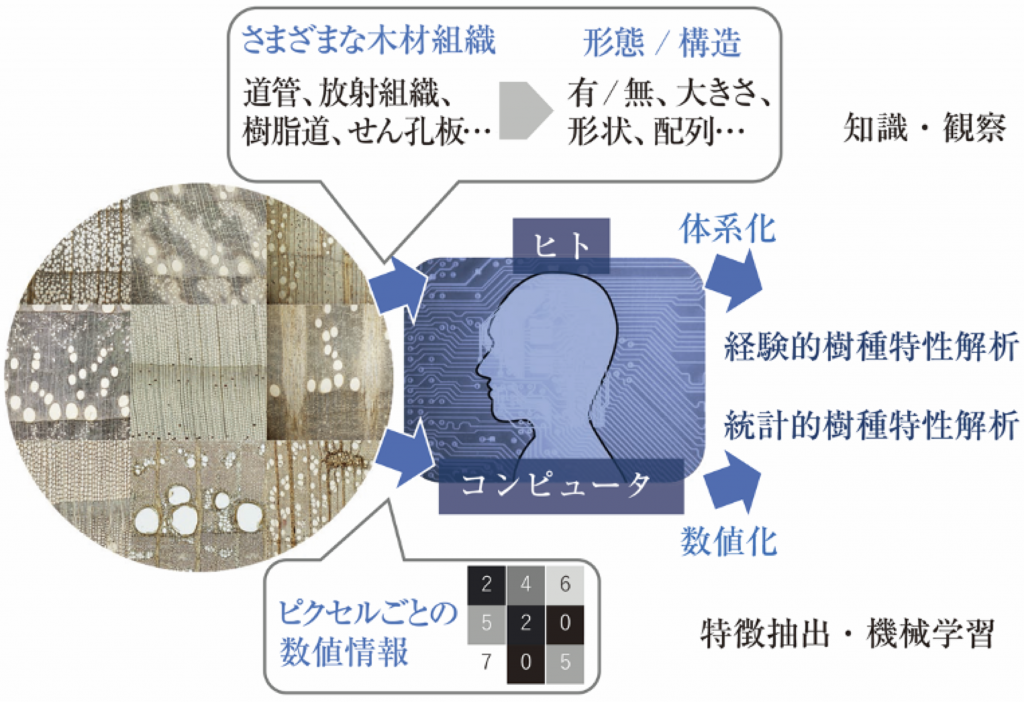
The structure of wood is very diverse and a record of tree life history. Not only it is beautiful, but there is a specific form of the tree species that has been acquired during a long evolution process. In other words, the structural diversity can be very important academic seeds. Efforts to decipher the meaning of diversity have been carried out by researchers with high expertise and extraordinary imagination, but it is still not fully understood. We, therefore, replace “observation” of humans with “machine learning” of artificial intelligence, and analyze the ‘big data’ of microscopic database to unveil the species-specificities, structure-properties relationship, and the environmental response, that are difficult to study just from the visual inspection.
木材の組織構造は、非常に多様性に富む、樹木の生活史の記録である。単に美しいだけでなく、長い進化の過程で獲得した、樹種に固有のフォルムが存在する。つまりその多様性には、様々な学術的シーズとなりうる情報が畳み込まれている。これを読み解く努力が、高い専門性と並外れた想像力を有する専門家により続けられてきたところであるが、多様性と特性と連関させて理解し、説明するには至っていない。そこで、人の「観察」を人工知能の「機械学習」に置き換え、木材の顕微鏡画像のビッグデータに潜む法則を見出し、樹種ごとに特徴のある構造がどのように物理的・機械的な性質と関係しているか、樹木の組織内部に記録されて環境に対する応答など、単なる観察では不可能な解析を目指す
AI based recognition is fun but needs professional knowledge to evaluate and interpret the model correctly.
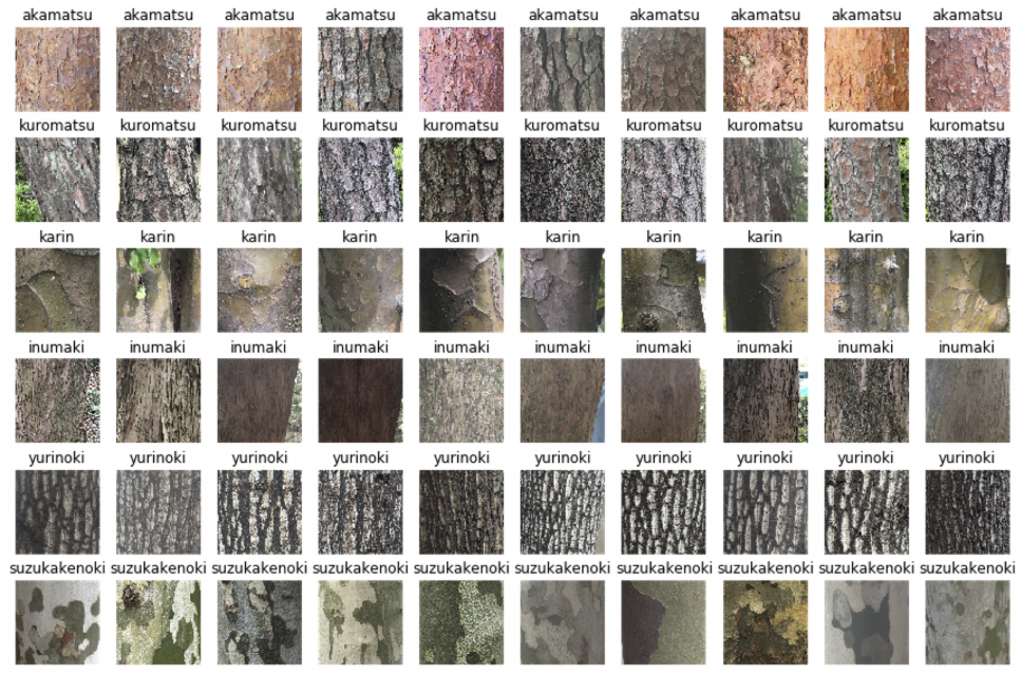
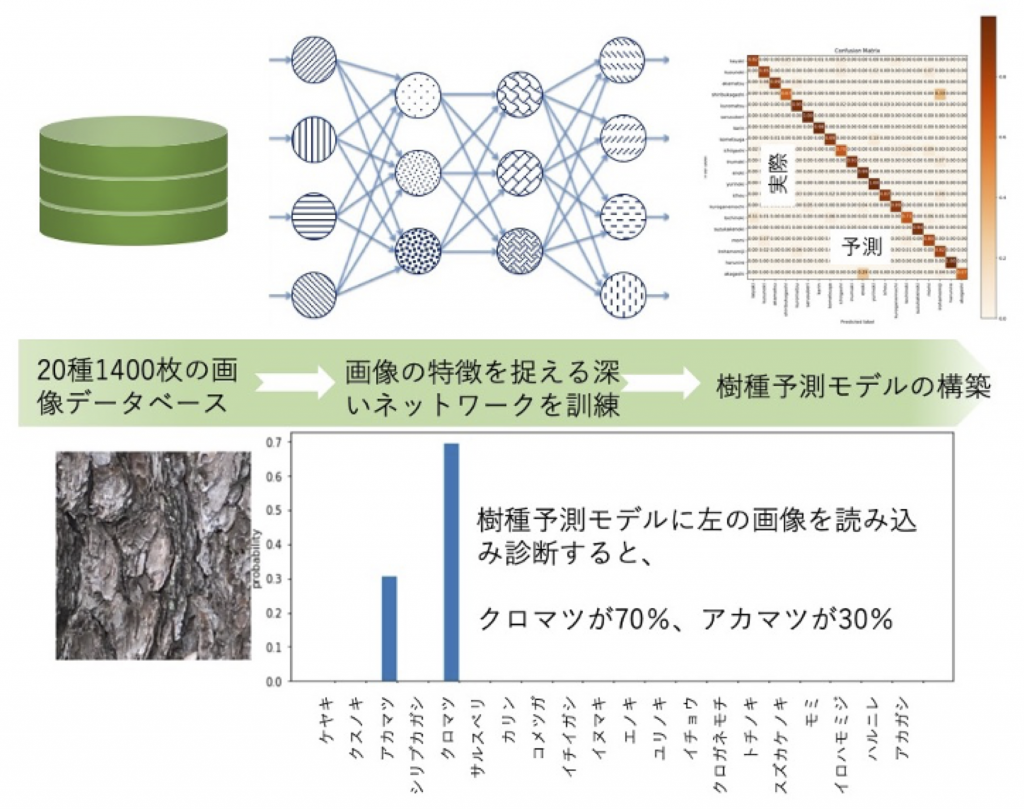
Ref: 杉山淳司: 樹皮ウォッチングのすすめ, 生存圏研究, 2020
3. In silico wood formation: species specific time-scale pattern in wood structure. 観察を超える形態の定量化は可能だろうか? キーワード:形成の数理生物学、年輪気候学
What does the transition of the size of the coniferous tracheid in each annual ring tell us? Can we detect the traces that the growth pattern peculiar to a tree species is affected by the environment? From machine learning and statistical analysis, it became clear that the size of the tracheid positioned at about 60% of the annual ring correlates with the precipitation in the previous year.
それぞれの年輪の中に見られる針葉樹の仮道管の大きさの移り変わりには何が記録されているのか? 樹種に特有の成長パターンが環境によって影響される痕跡を知ることはできるだろうか。機械学習や統計的に調べてみると年輪の6割程の位置にある仮道管の大きさが前年の降水量に相関することなどが見えてきた。
Inter-annual ring structure of Cryptomeria japonica wood relates to the climate!?
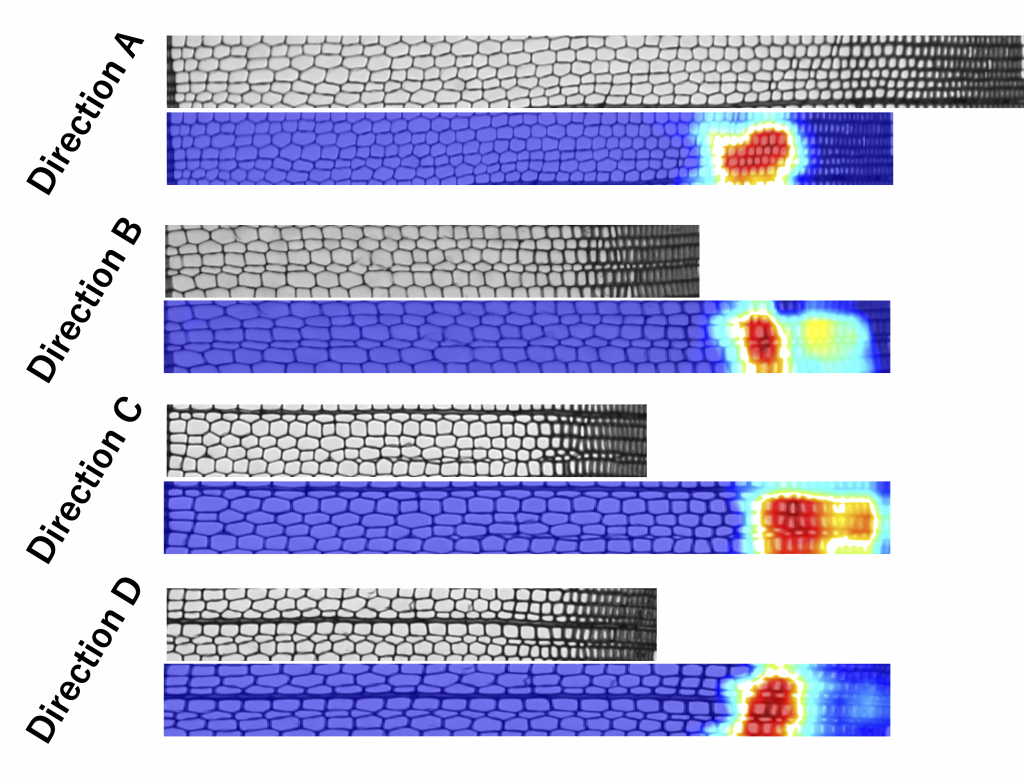
4. High-tech diagnoses of culturally important wooden materials 先端的な科学技術を利用して木質材料を診断する キーワード:放射光科学、博物学、保存科学
Scientific research is indispensable for maintaining wooden artefacts represented by cultural properties for a long time. However, in principle, those designated cultural properties requires non-destructive and non-invasive investigation. For this reason, X-ray CT has been introduced to the National Museums, and it is very useful for internal investigation of Buddha statues, for instance. Although the images are in low resolution, it is possible to extract various information on wood species and production procedures, by analyzing image data by making full use of the knowledge about wood and information processing technology.
文化財に代表される貴重な木製品や構造物を末長く維持することためには科学的調査が不可欠である。しかし、文化財として指定されたものは、非破壊・非侵襲の測定が原則である。そのため、国立博物館にはX線CTが導入されて仏像などの内部調査に威力を発揮している。得られる木材の画像は低分解能であるが、その情報を頼りに、木材に関する知識や情報処理技術を駆使することで、樹種の同定や、木取りや制作手順などに関する様々な情報を引き出すことが可能になってきた。
Seeing is not always believing and needs theoretical background for seeing.
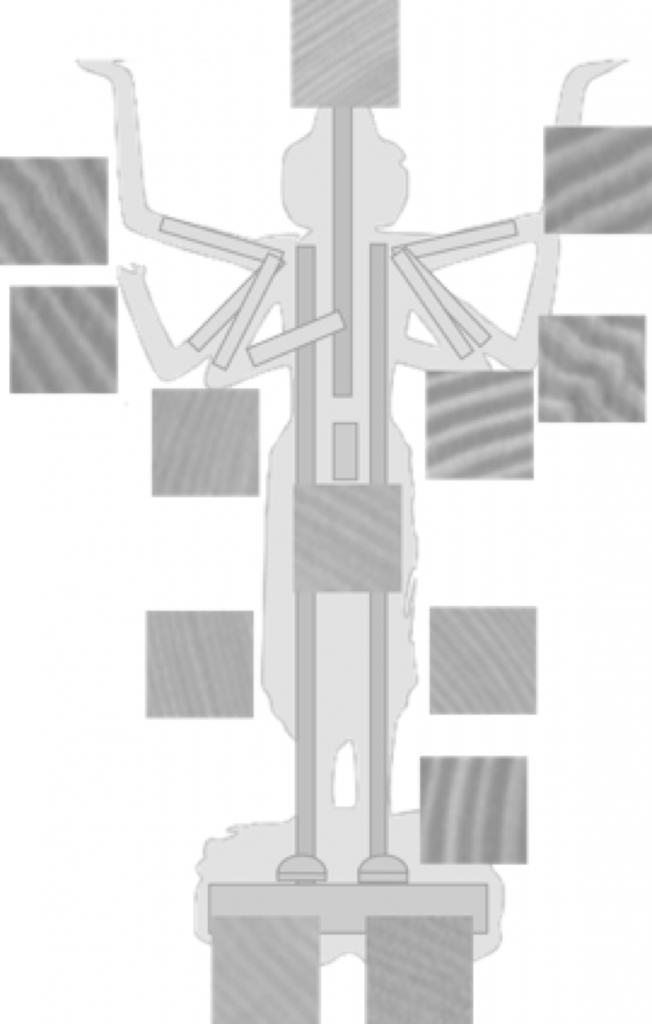
外からは見えない阿修羅像などの心木の樹種特定による社会貢献
5. Hierarchical structure of woody plants: from molecules to tissues. 分子から組織へ:木本植物の層階状構造 キーワード:高圧急速凍結、電子顕微鏡、セルロース
How far did we understand the structure of wood cell wall? It has been a long-standing subject in our laboratory to understand the molecular architecture composed of cellulose, hemicellulose, and lignin and their cooperation. Among many unknown issues, the mechanism of crystallization of cellulose microfibirls is still debated. One approach is the structural study of nascent cellulose microfibril just after synthesis, with a state of art electron microscopic analyses.
樹木細胞壁の構造はどこまでわかっただろうか。セルロース、ヘミセルロース、リグニンからなる分子構築や、その形成の仕組みを明らかにすることは当研究室の長年のテーマである。セルロースに焦点を当てて、セルロースの結晶化について検討する。緻密な細胞壁複合体に組み込まれる前の、合成直後の天然セルロースの構造に迫る。
Crystallization and structure of nascent cellulose microfibirl
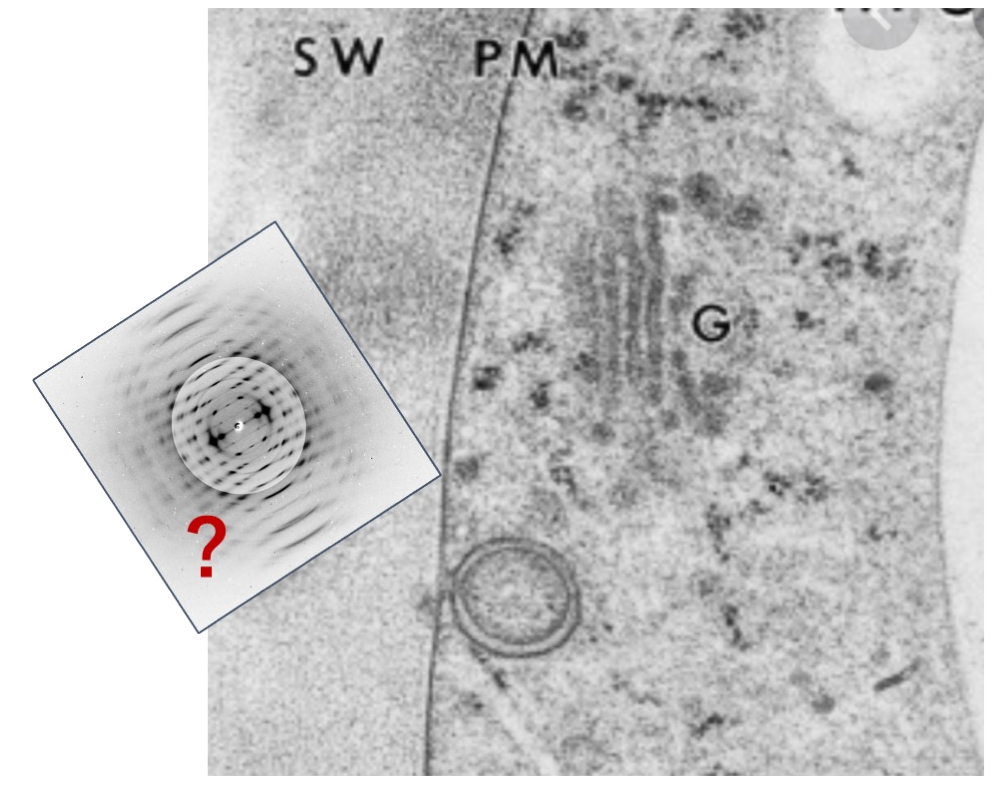
Keiji Takabe, Jong Sik Kim, Chapter 16 – Rapid Freezing and Immunocytochemistry Provide New Information on Cell Wall Formation in Woody Plants, Editor(s): Yoon Soo Kim, Ryo Funada, Adya P. Singh, Secondary Xylem Biology, Academic Press,2016, 345-361 Diffraction from M, Mueller.
(つづく)
